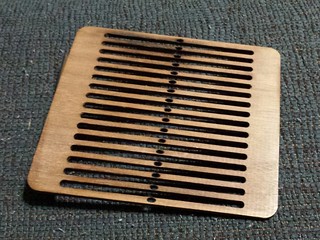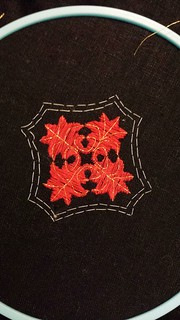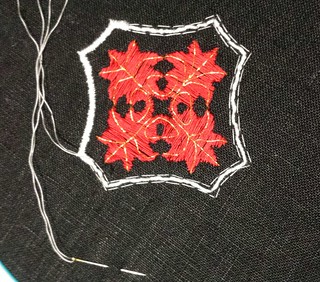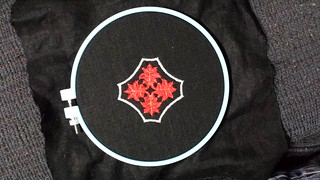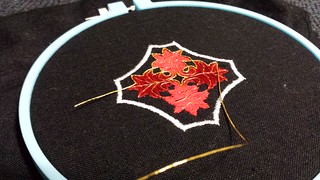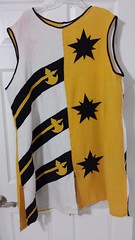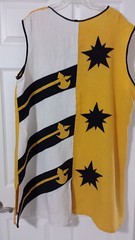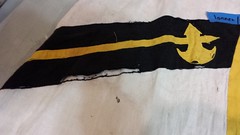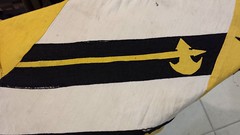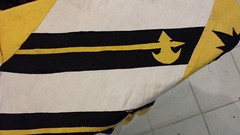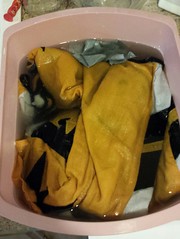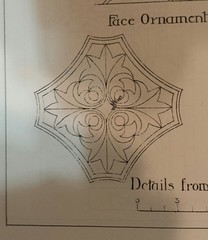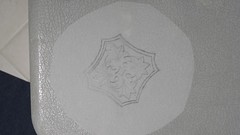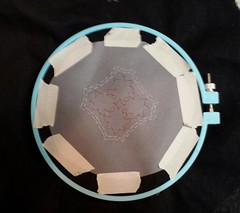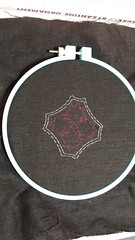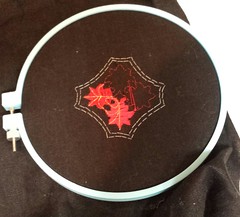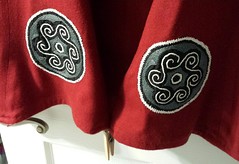On the morning of the first great sewing day, I was starting to get a little nervous. We were making a lot of surcoats for a lot of people and I was beginning to sweat the details. But then, a little SCA magic happened....
My first batch of surcoats was made with my friends Rachel and Blaise. I wore my surcoat at that Bordermarch Autumn Melees (BAM) and Gulf Wars. Here is a picture of it all nice and relatively unscathed.
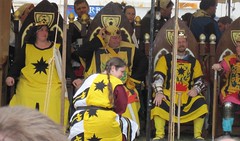
That's me in the court of King Owen and Queen Genevria at Gulf Wars. Anyway, I wasn't going to BAM the next year, so I loaned out my surcoat to a friend. As I missed more and more melee events, I kept getting asked by various people to borrow the surcoat and it got passed around. At some point, we lost track of who had it and I had written it off to the sands of antiquity. So, the morning of sewing day, Ionnes walks through the door and asks if he could add surcoat repair to the queue. He has this scruffy looking surcoat that needs repair (front on left, back on right).
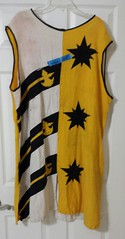
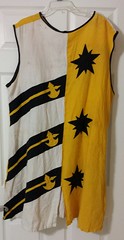
The first thing several people say is "wash it first," but he had! We dampened it and ran it through the drier. We ironed it without mercy. The pictures above show our improved results. It's still pretty scruffy.
The stripes are falling off and a bit shredded. There are tiny wear and tear holes scattered all over. These little holes are pretty normal and familiar for the chivalric combat folks. The neck and arms holes are in need of some help.
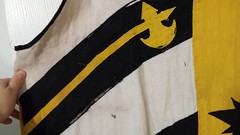
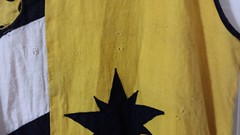


The construction of this surcoat is looking pretty familiar, so I look inside and there is a little mark in the front. This is my prodigal surcoat - returned home! Some laughing and a bit of discussion gave it some history. It's attended five years of melee events since it left me!
So now this scruffy coat has some perspective and it is in pretty good shape for five years of melees. The stitching has held up surprisingly well. The star applique is in very good shape and needs minimal maintenance. The stripes need serious repair. They are not just peeling off at the edges, the linen is disintegrated in some bits. The tiny little holes will need darning where they are getting big.
The most surprising thing I've learned is that "decorative" bias tape on the neck and arm holes is actually reinforcing those seams - and in some places is holding it together where the fabric has shredded. Now I know why we use that approach. We made our own linen bias tape and it still looks good and has worn really well. I think that it was worth the effort and probably extended the life of this garmet for at least a couple of years.
So, now I can say with some confidence that this little workshop makes some quality fighting gear :)

